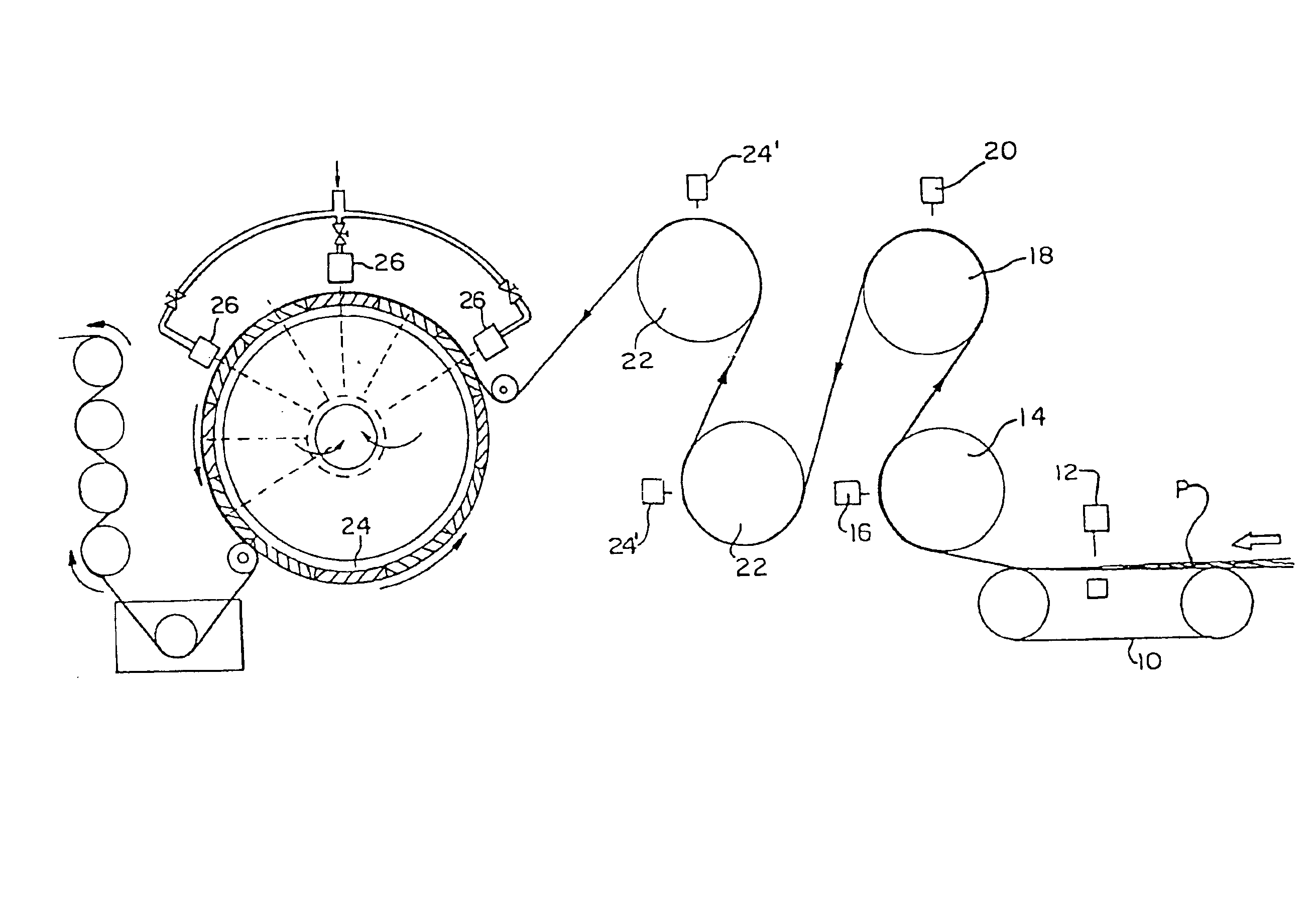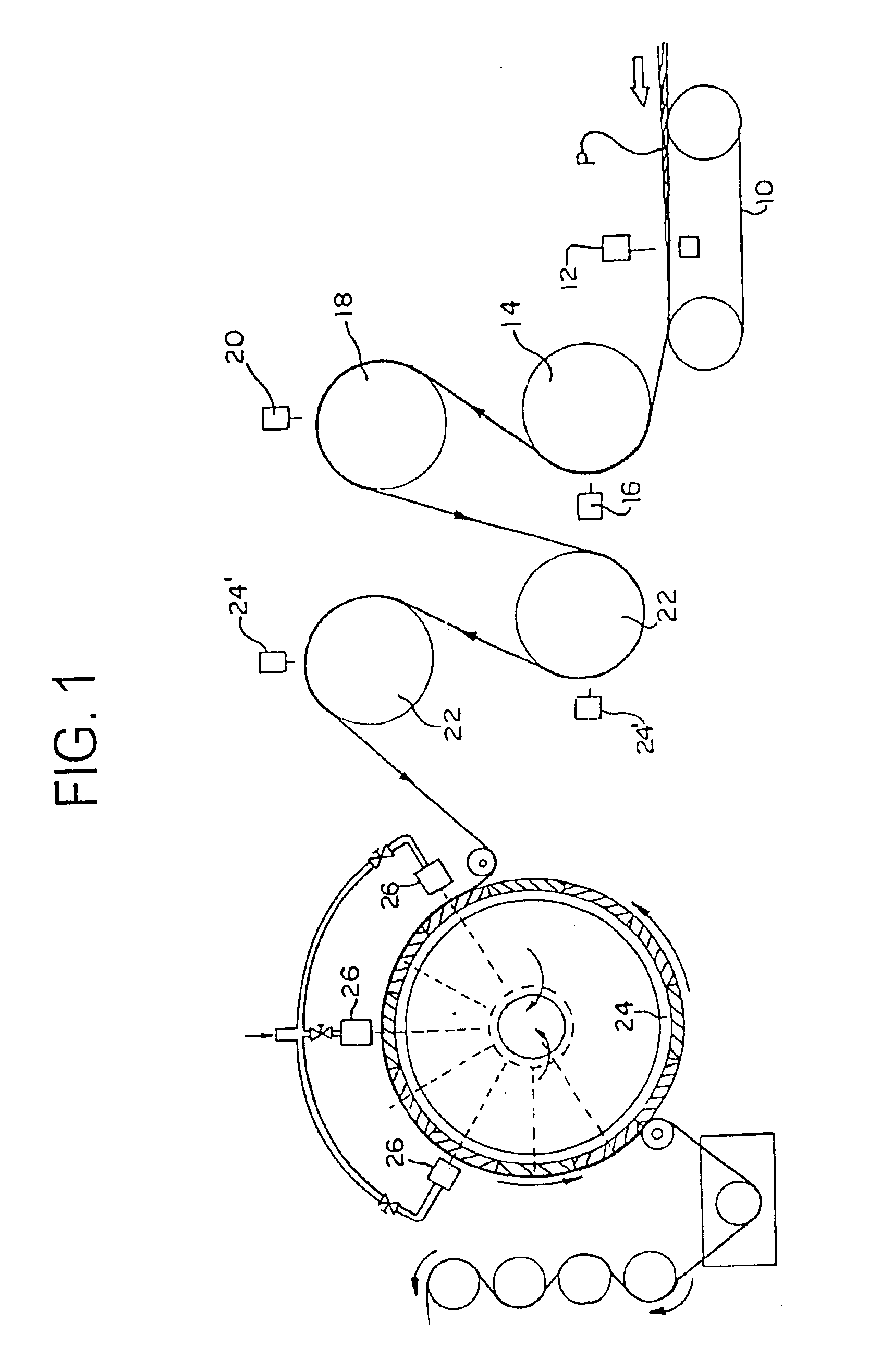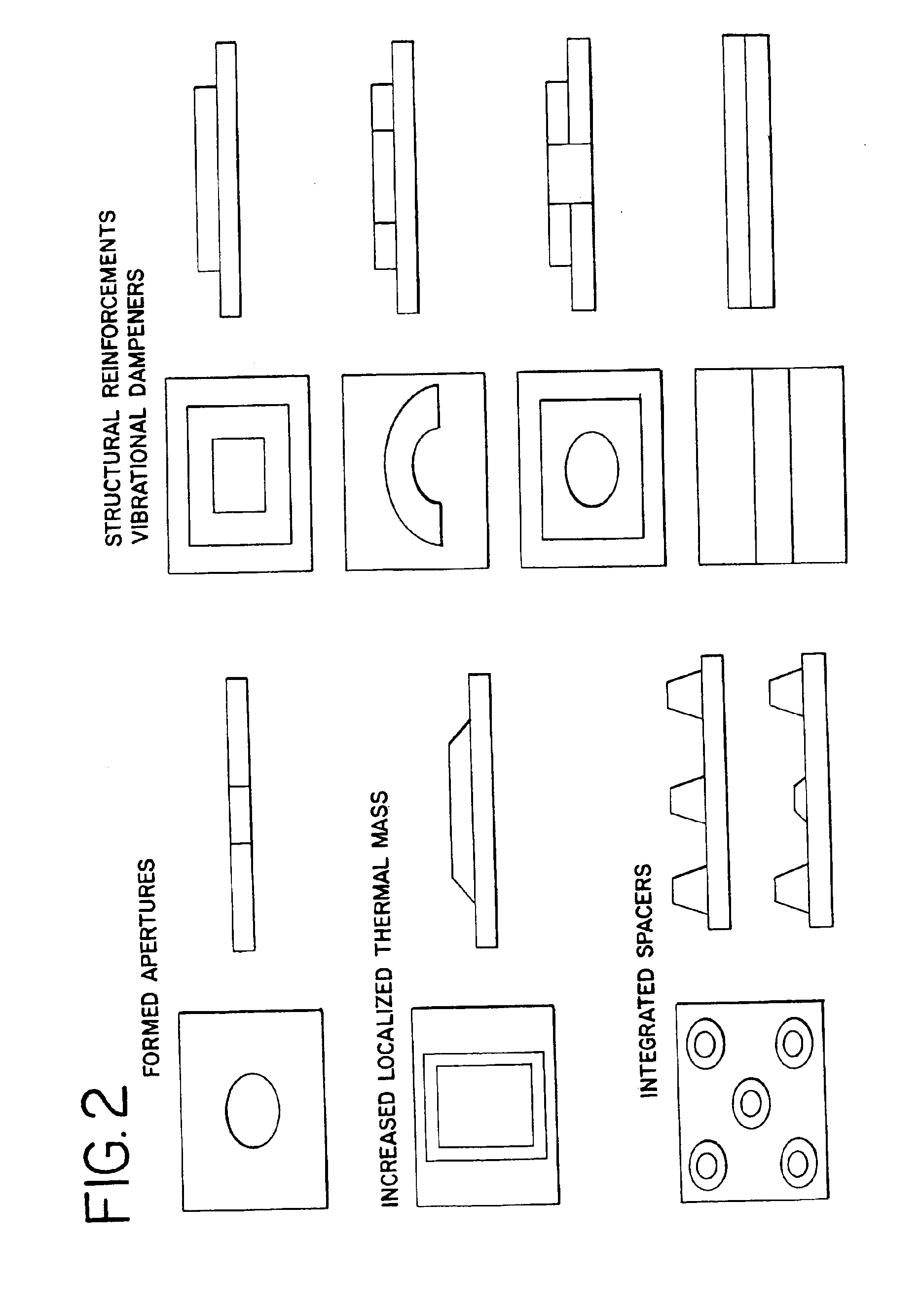Three-dimensional nonwoven substrate for circuit board
a nonwoven substrate and circuit board technology, applied in the direction of printed circuit stress/warp reduction, conductive pattern formation, circuit electrical arrangement, etc., can solve the problems of difficult handling, high cost, and high cost of weaving fiberglass, so as to improve structural performance, prevent cracking, and unique and useful performance properties
- Summary
- Abstract
- Description
- Claims
- Application Information
AI Technical Summary
Benefits of technology
Problems solved by technology
Method used
Image
Examples
Embodiment Construction
[0018]While the present invention is susceptible of embodiment in various forms, there is shown in the drawings and will hereinafter be described a presently preferred embodiment of the invention, with the understanding that the present disclosure is to be considered as an exemplification of the invention, and is not intended to limit the invention to the specific embodiment illustrated.
[0019]Manufacture of a three-dimensionally imaged nonwoven substrate embodying the principles of the present invention is initiated by providing the fibrous matrix, which can include the use of staple length fibers, continuous filaments, and the blends of fibers and / or filaments having the same or different composition. Fibers and / or filaments are selected from natural or synthetic composition, of homogeneous or mixed fiber length. Suitable natural fibers include, but are not limited to, cotton, wood pulp and viscose rayon, flax, hemp, and kenaf. Natural fibers also include silicates, such as glass. ...
PUM
| Property | Measurement | Unit |
|---|---|---|
| lengths | aaaaa | aaaaa |
| lengths | aaaaa | aaaaa |
| resinous | aaaaa | aaaaa |
Abstract
Description
Claims
Application Information
 Login to View More
Login to View More - R&D
- Intellectual Property
- Life Sciences
- Materials
- Tech Scout
- Unparalleled Data Quality
- Higher Quality Content
- 60% Fewer Hallucinations
Browse by: Latest US Patents, China's latest patents, Technical Efficacy Thesaurus, Application Domain, Technology Topic, Popular Technical Reports.
© 2025 PatSnap. All rights reserved.Legal|Privacy policy|Modern Slavery Act Transparency Statement|Sitemap|About US| Contact US: help@patsnap.com



